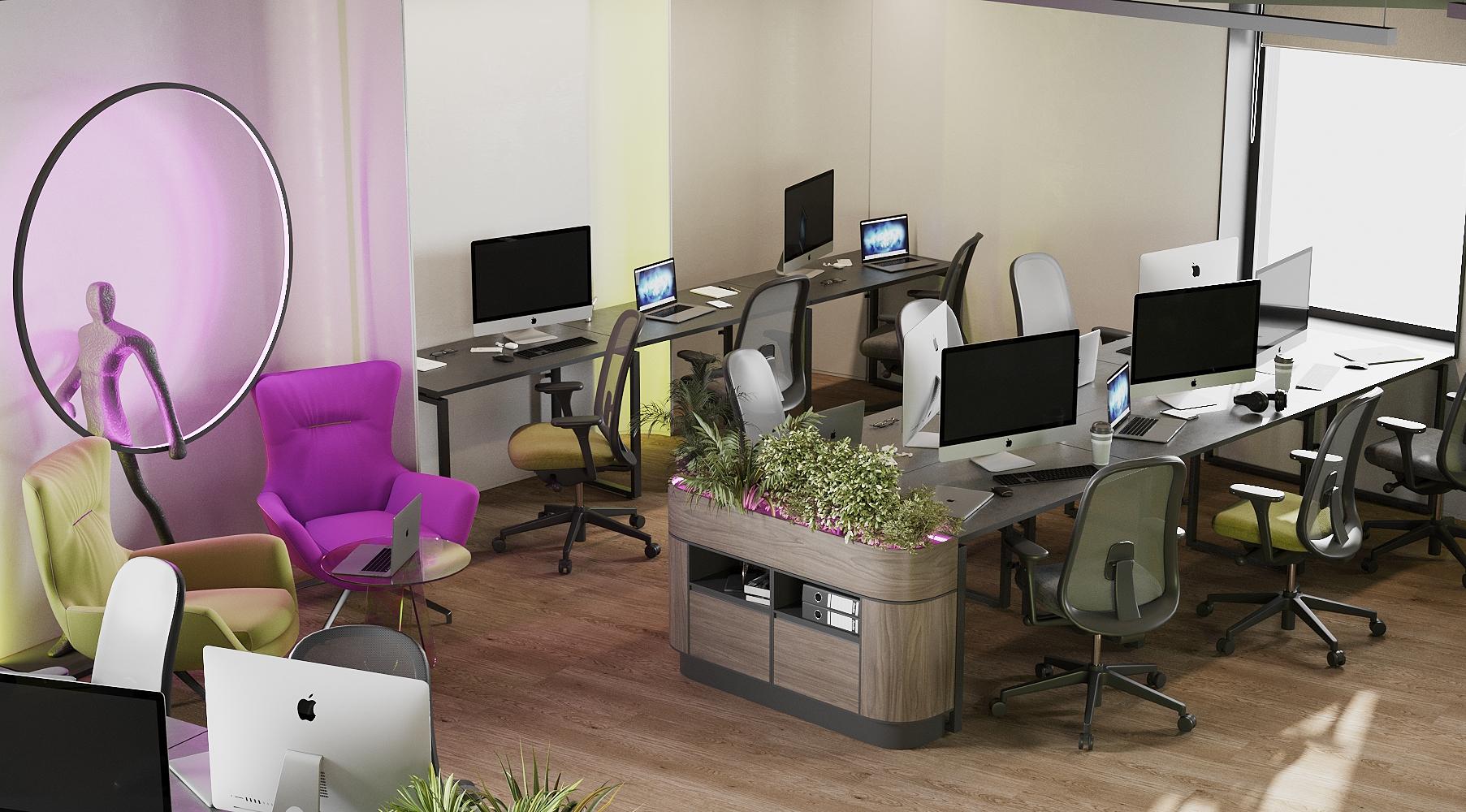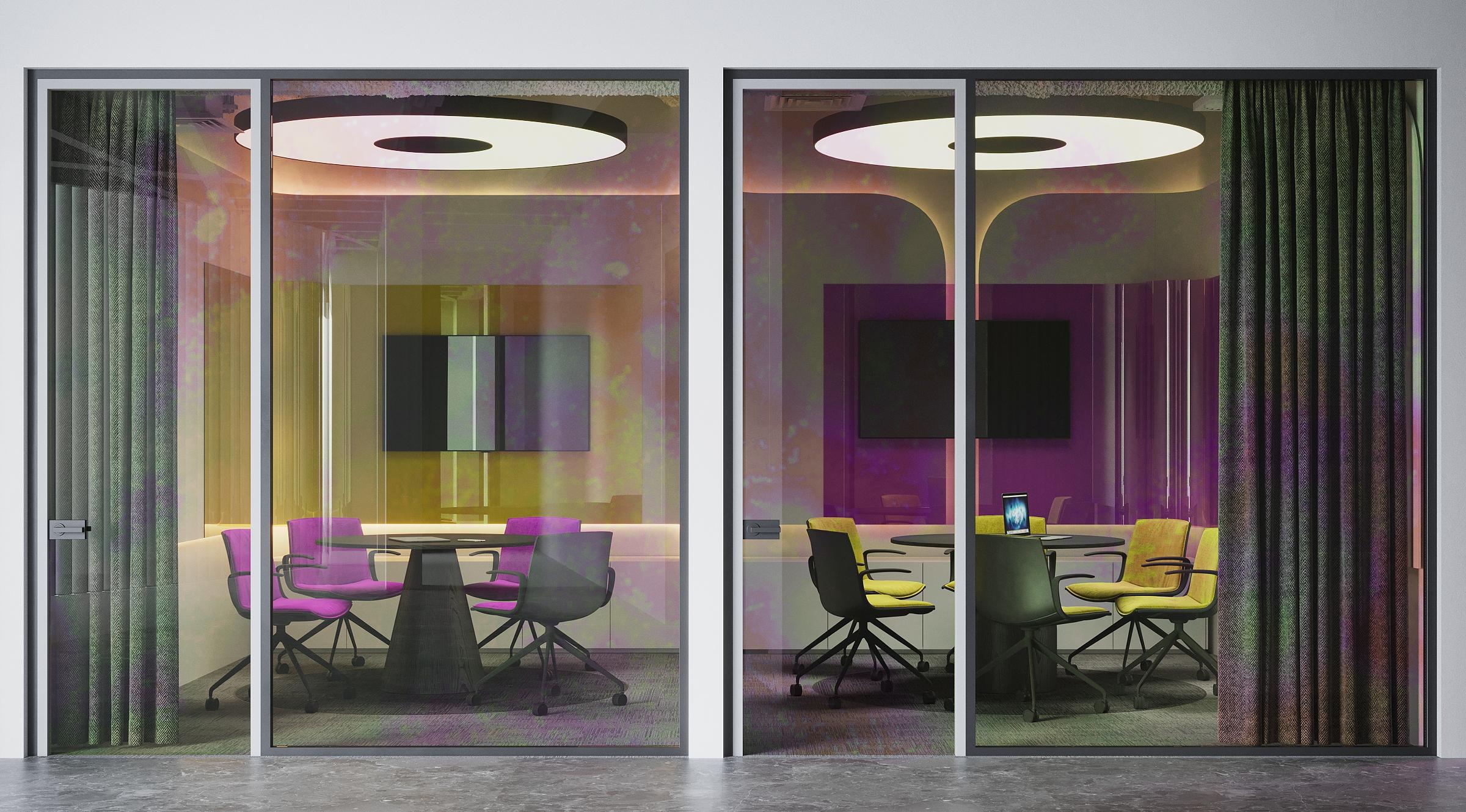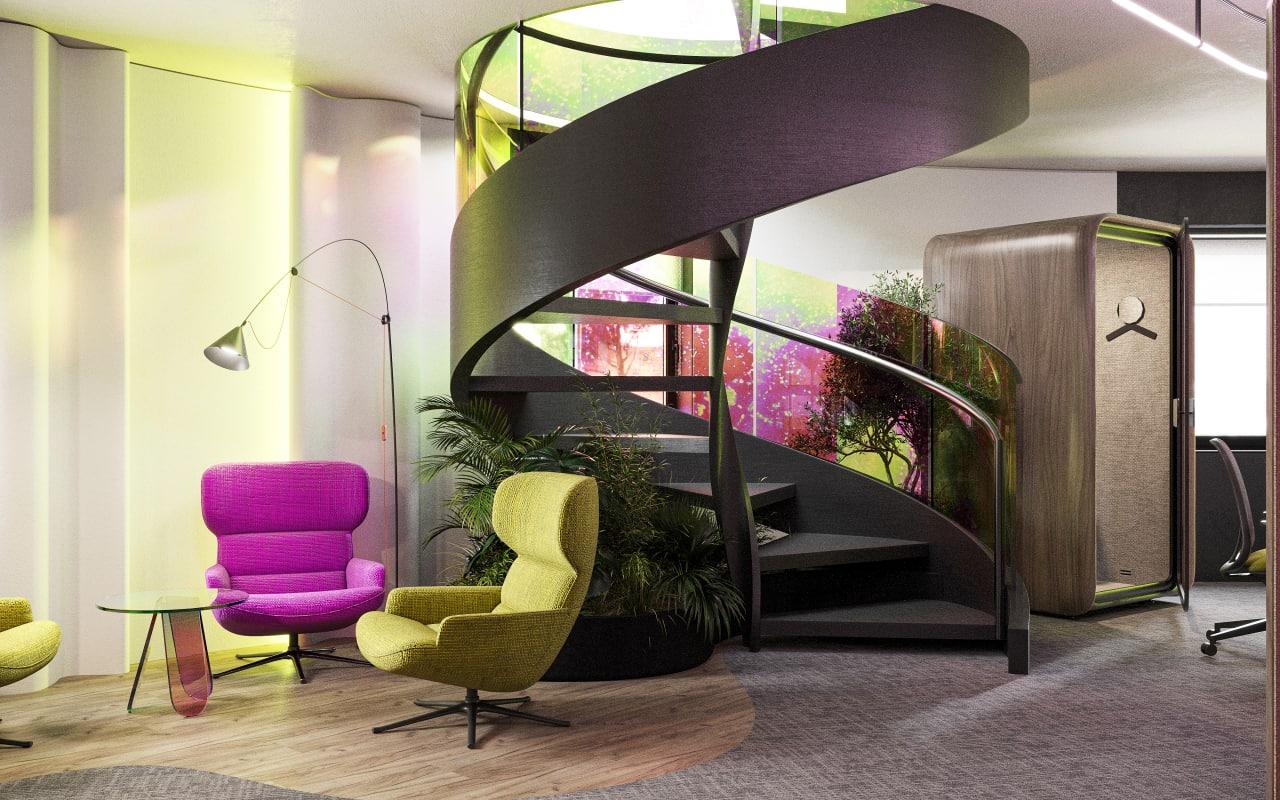Global companies are gradually bringing employees back from remote work to offices.
For Cypriot employers, it's also time to focus on the future of workspaces that include flexible work options and heightened attention to the well-being and engagement of employees. The more successful and motivated the team, the more successful the business. So, what are the trends in office design that focus on employee well-being? Aleseya Karnaukhova, CEO of ZIKZAK Architects, shares insights.
Flexible Workspaces for Hybrid Work Groups
With the rise of remote work, offices have become hubs for collaboration and creativity. Flexible workspace design with an emphasis on adaptive planning and furniture is crucial. It allows spaces to transform as needed, fostering collaboration.

Open space in a Cyprus office, designed by ZIKZAK Architects
Biophilic Design
People have an innate biological connection to nature, so bringing elements of the outdoors inside the office promotes employee well-being without the need to leave the workplace. Natural elements like plants, natural light, and even water features in office spaces not only enhance aesthetics but also contribute to employees' well-being, reduce stress, and increase productivity.
Sustainable Practices
Energy-efficient lighting, eco-friendly furniture and materials, green technologies, indoor plants, waste reduction, and encouraging employees to adopt sustainable practices significantly reduce the environmental impact. Additionally, an eco-friendly approach to workspace design makes it unique and stylish. More and more offices are obtaining "green" building certifications, and this trend is expected to grow.
Health-Centric Space. Priority on Safety
Incorporating exclusively ergonomic furniture, designated relaxation areas, and indoor air quality improvement technologies contribute to the health, satisfaction, and productivity of the team. After the pandemic, measures to maintain health and safety have become paramount. Offices are implementing contactless technologies and sanitary stations to ensure the well-being of all "residents."

Technological meeting rooms in an office designed by ZIKZAK Architects
Integration of Technology into Workspace
Smart offices use IoT (Internet of Things) devices, AI-based automation, and interactive digital solutions to enhance work efficiency and team communication, optimizing employee productivity.
Art and Aesthetics
Design studios use art as a tool to improve the office atmosphere, from murals and custom sculptures to modern installations. Designers consider color psychology to choose palettes that encourage focus, creativity, or collaboration, depending on the purpose of the room.
Employee Personalization and Involvement
Employers increasingly involve employees in the design process, encouraging them to personalize their workspaces. This trend enhances employees' sense of belonging and comfort, contributing to job satisfaction and a desire to work for a company that values each employee's input regarding workspace design.

An office in Cyprus, designed by ZIKZAK Architects
Companies that are betting on bringing teams back to the office and wanting to retain their top talents should be farsighted. They should acknowledge that optimally comfortable working conditions are not a luxury but a strategic necessity for well-being, increased efficiency, and the success of the organization.
Real also:
Cypriots: Characteristics and Mentality Features
Design for Sustainable Development: Eco-Friendly Office Space in Cyprus
Why do IT specialists move to Cyprus?

